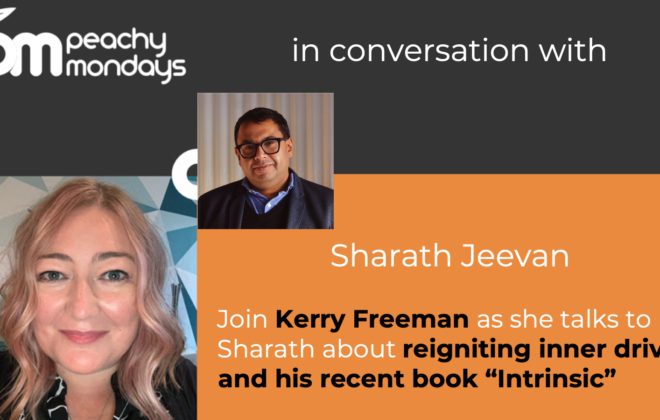From feedback to action
How well do you listen to your employees? Do you know what they really want? Do you know what motivates and inspires them? Do you know what their challenges are and why they are experiencing them?
Listening to your employees via surveys and pulses is the backbone of any successful employee engagement strategy. Traditionally, the annual employee engagement survey has been the go-to for HR leaders to gather insight about their people. But the traditional survey is no longer meeting HR’s needs. While they may reveal what employees are thinking, they don’t reveal why and that means it’s hard to take effective action.
You need deep insight, fast
Peter Drucker, the famous Austrian-born American management consultant once said “The most important thing in communication is hearing what isn’t said”. When it comes to face-to-face communication, this is sometimes easy to spot; through facial expression and body language. But how do you get underneath the real meaning of what’s being said when it’s a response in a survey?
Focus groups and follow-up meetings will help, but they are labour-intensive, expensive, difficult to document and not inclusive since they only involve a cross-section of employees. And, of course, employees may feel uncomfortable about expressing how they really feel in a face-to-face setting, and fear potential repercussions.
There is an alternative and it’s called Targeted Anonymous Dialogue™. It’s a unique feature of the Peachy Mondays employee feedback platform that enables organisations to have two-way anonymous follow-up conversations with employees based on their survey responses.
Peachy Mondays’ clients use Targeted Anonymous Dialogue™ to learn what they are doing well, gain a deeper understanding of problems, and engage employees in conversations about solutions. Just imagine, receiving deep insight in real-time, not days or months later.
Anonymous follow-up conversations reveal more
Let’s say you’re the HR director of an organisation that’s going through a period of transformation. Your employee engagement survey shows that 20% of employees are dissatisfied with the change communications they have received. So, you work with key colleagues in your HR and internal communications teams to initiate anonymous conversations with those dissatisfied respondents.
Your head of internal communications conducts the follow-up…
Hi, I’d like to ask a question to help me better understand your initial response. Your anonymity is maintained. Could you explain a bit more? How could we improve our change communications?
Jane (Head of Internal Communications)
The respondents receive an email indicating that they have a new, anonymous message from Jane. They can access their message in the platform at a time and place that suits them and choose whether to respond or not. (In our experience, around 40% of employees will take the time to answer). Jane can read all of their responses in her conversation inbox within the platform and, of course, the anonymity of respondents is maintained unless they choose to share their identity, which some employees do.
In this example, Jane learned that employees were looking for more frequent, factual communications, and it was important that communication deadlines were met. She also learned that employees valued face to face communications from leaders, together with the opportunity to ask questions. Some employees also did not have access to the communication channels that were being used to share information.
Closing the feedback loop
The effort you expend in gathering and understanding employee feedback will quickly be undermined unless you act on it. A comment we frequently hear when speaking with employees of large enterprises is that no action is taken as a result of employee feedback. Cynicism then builds which can affect employee participation in future surveys and diminish faith in leaders that action will be taken.
In our example (which focuses on a common challenge of change and transformation programmes), the head of internal communications was able to take action on the issues raised. Employee satisfaction with the change communications they received dramatically increased as the programme progressed.
Democratising insight and supporting action
There are several reasons why, despite best intentions, action is not taken in response to employee survey feedback. Often, there is so much information, it’s hard to know where to start. Equally, surveys are often managed centrally and it takes time to cascade results throughout the organisation. Finally, time-poor line managers may lack the capacity or capability to understand and take action on their results.
Peachy Mondays’ Manager Dashboard allows managers to see their teams’ feedback as soon as the survey is closed. The dashboard is easy to use. Managers can see how their teams’ results compare with previous surveys as well as the wider organisation. Sophisticated analytics highlight the priority areas that will have the greatest impact on their teams’ employee engagement. The platform also has embedded hints and tips that help managers to take effective action; it can even link to your organisation’s information and learning resources.
Imagine…
- your employee survey closes on Monday evening
- on Tuesday morning, your managers can view their teams’ results
- they discover that increasing the frequency and quality of employee feedback would have the greatest impact on their teams’ engagement
- they take an e-learning course on delivering feedback, and,
- implement what they have learned that afternoon. Powerful!
Employee engagement 3.0
Renowned industry analyst Josh Bersin refers to the feedback-to-action movement as employee engagement 3.0. It’s a way of defining how the employee engagement industry is being transformed through technology. Solutions that embed personalised hints, tips and ‘nudges’ equip leaders and managers with the tools they need to take effective action. The survey is no longer just a feedback mechanism; it is becoming a ‘true behavioural change system’.
We need to move from ‘feedback to action’ and think more holistically about employee engagement strategy.
If you’d like to find out how Peachy Mondays can help transform your employee engagement strategy please get in touch with the team to request a free demo.
Related Posts
Categories
- Case Study (13)
- Change and transformation (21)
- Connectedness (4)
- Culture (17)
- Design (10)
- Diversity and Inclusion (1)
- Effectiveness (16)
- Employee engagement (60)
- Employee experience (43)
- Employee Feedback (51)
- Employee Wellbeing (1)
- Events (10)
- Financial Wellbeing (1)
- Happiness (4)
- Internal Communications (10)
- News (24)
- Onboarding (1)
- Organisational Effectiveness (18)
- Uncategorized (3)




